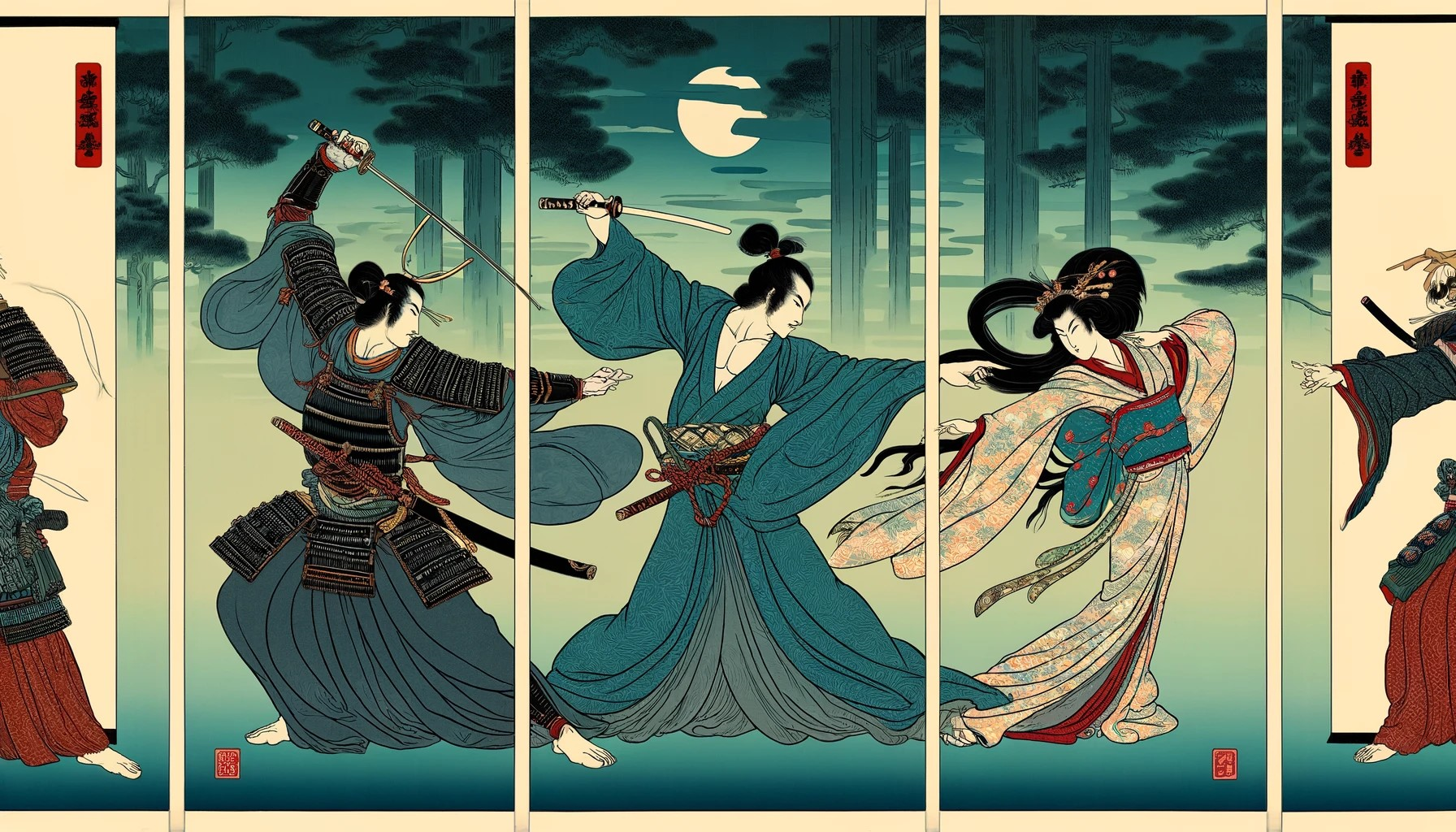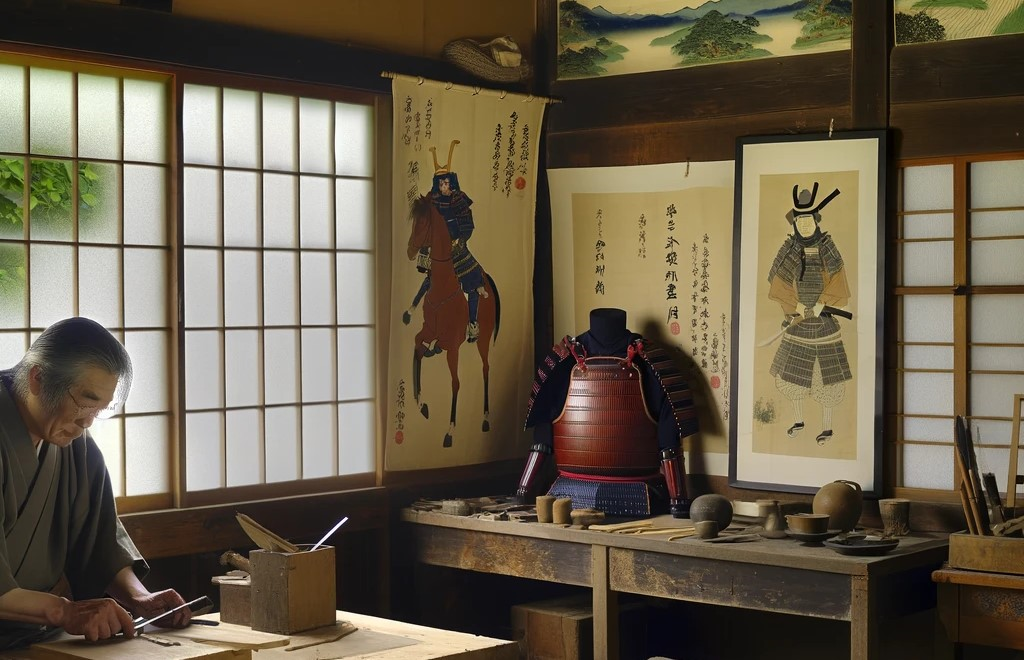Utagawa Hiroshige (1797 ~ 1858)
Hiroshige Utagawa, born in Edo (modern-day Tōkyō (東京)) as Andō Jūemon (安藤重右衛門) to a lower-ranking samurai
family, is considered one of the greatest and most influential ukiyo-e artists in Japanese history.
Initially exposed to art by a fellow firefighter who introduced him to the Kano (狩野) school of painting, Hiroshige was rejected
by Utagawa Toyokuni's (歌川豊国) studio but was later accepted by Toyohiro Utagawa (歌川豊広) in 1811. Under Toyohiro's tutelage,
he adopted his art name and learned traditional painting techniques.
After leaving the fire brigade to focus entirely on art, Hiroshige made a significant impact on the art scene with his series
"The Fifty-three Stations of the Tōkaidō (東海道)" in 1832, depicting the journey along the road connecting Edo to Kyoto. This work
highlighted both the beauty of the Japanese landscape and the everyday lives of its citizens, becoming one of his most celebrated successes.
During the period from 1831 to 1843, Hiroshige produced numerous acclaimed series such as "The Sixty-nine Stations of the Kisokaido (木曽街道),"
"Famous Views of the Sixty-odd Provinces," and "Thirty-six Views of Mount Fuji (富士山)," culminating with "One Hundred Famous Views of Edo."
In addition to landscapes, Hiroshige also created kacho-ga (花鳥画, bird and flower pictures), bijinga (美人画, pictures of beautiful women), and
yakusha-e (役者絵, actor prints).
Hiroshige's art was highly prized for its innovative use of perspective and color gradation techniques (ぼかし), which brought natural elements like
the sky and water to life with a sophistication that captivated collectors and artists in the West. His influence extended to European impressionists and
post-impressionists, such as Toulouse-Lautrec and Van Gogh, who literally copied two of his prints.
Hiroshige died in 1858 during the Edo cholera epidemic, leaving a lasting legacy in the art world. His works continue to be celebrated for their
ability to capture the essence of Edo-period Japan and for their profound cultural impact both in Japan and internationally.
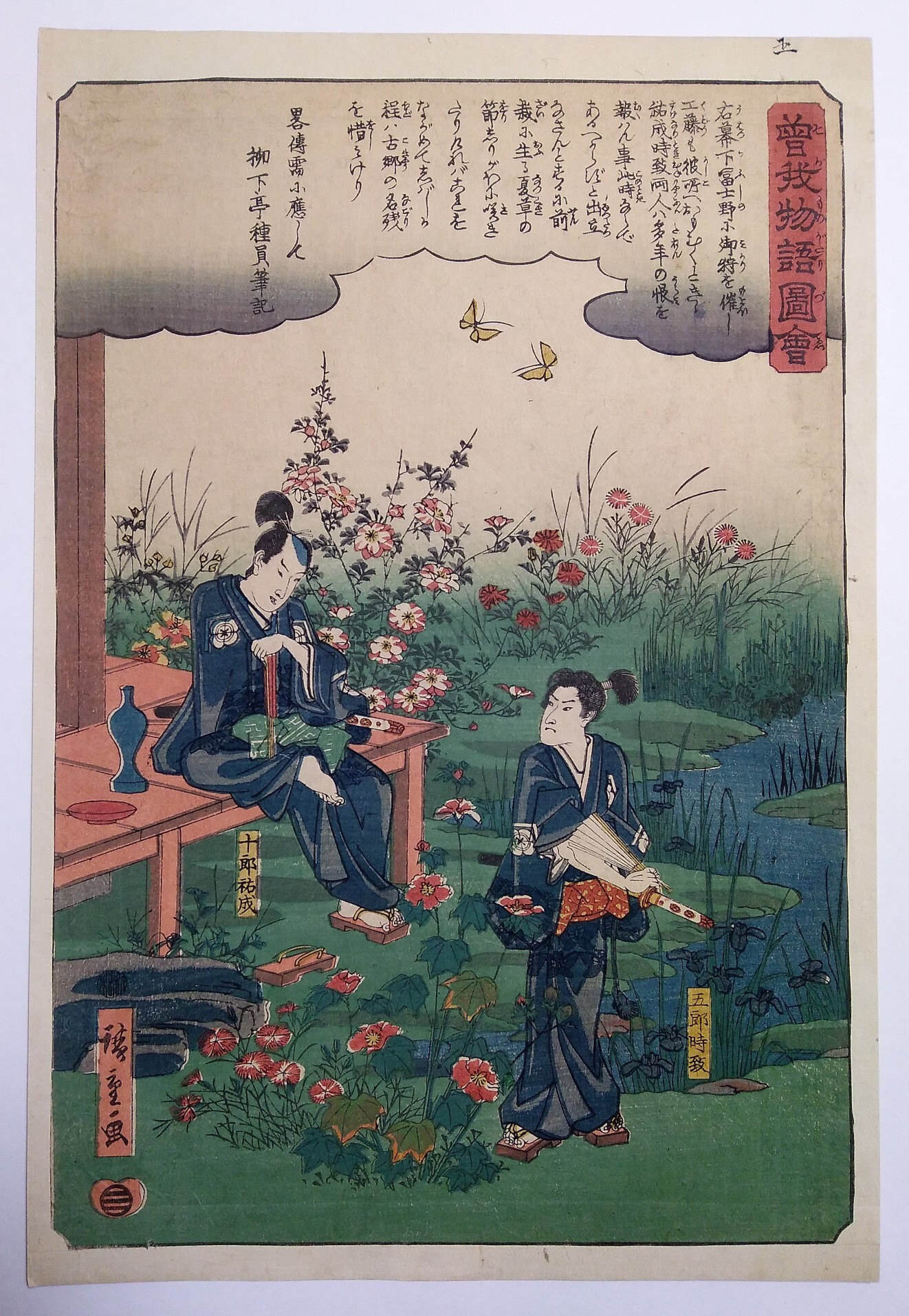
Sukenari and Tokimune Saying Good-bye to Beautiful Flowers
Collection of picture
of the Sōga Tale
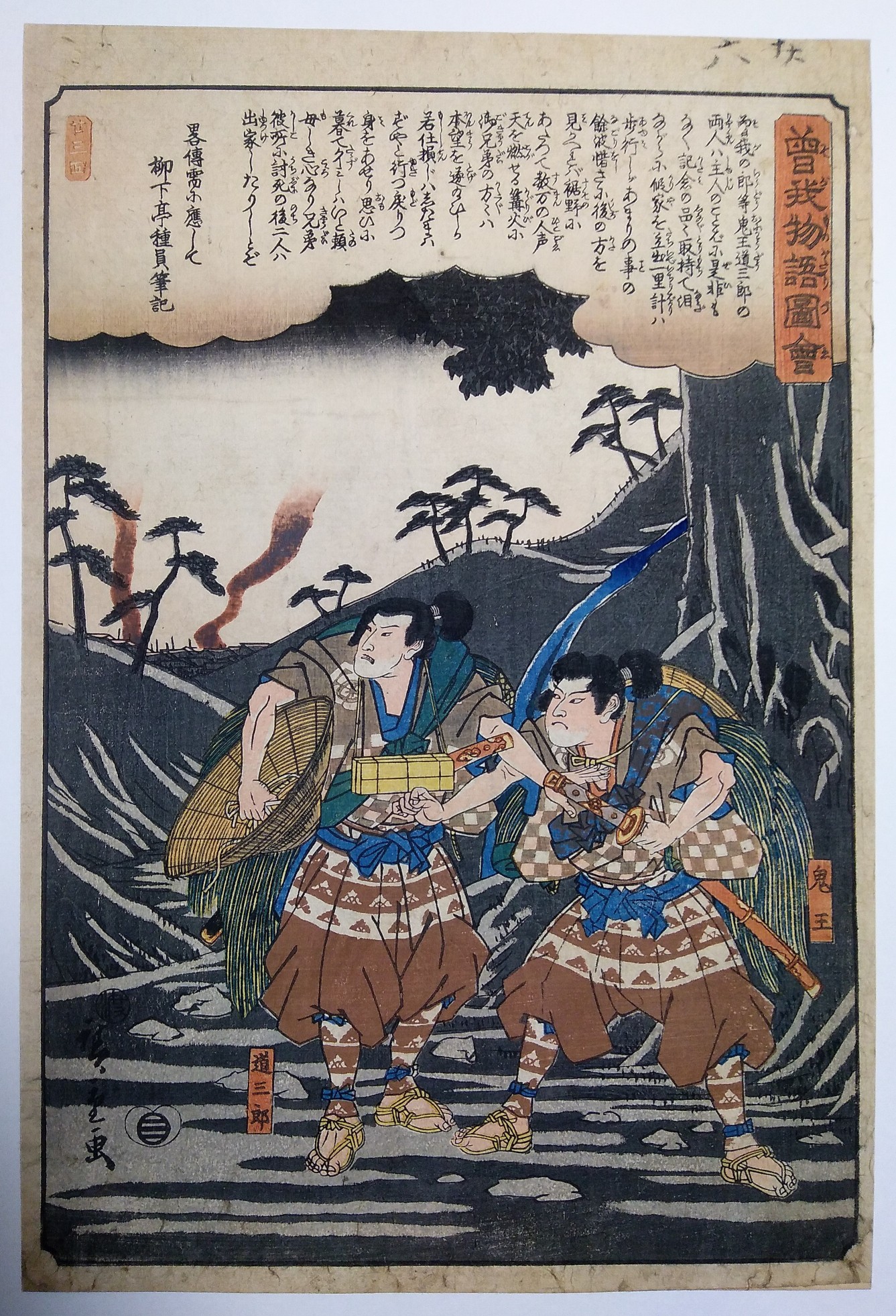
Oniō and Dōzaburo, Sōga Brothers' Vassals
Collection of picture of the Sōga
Tale
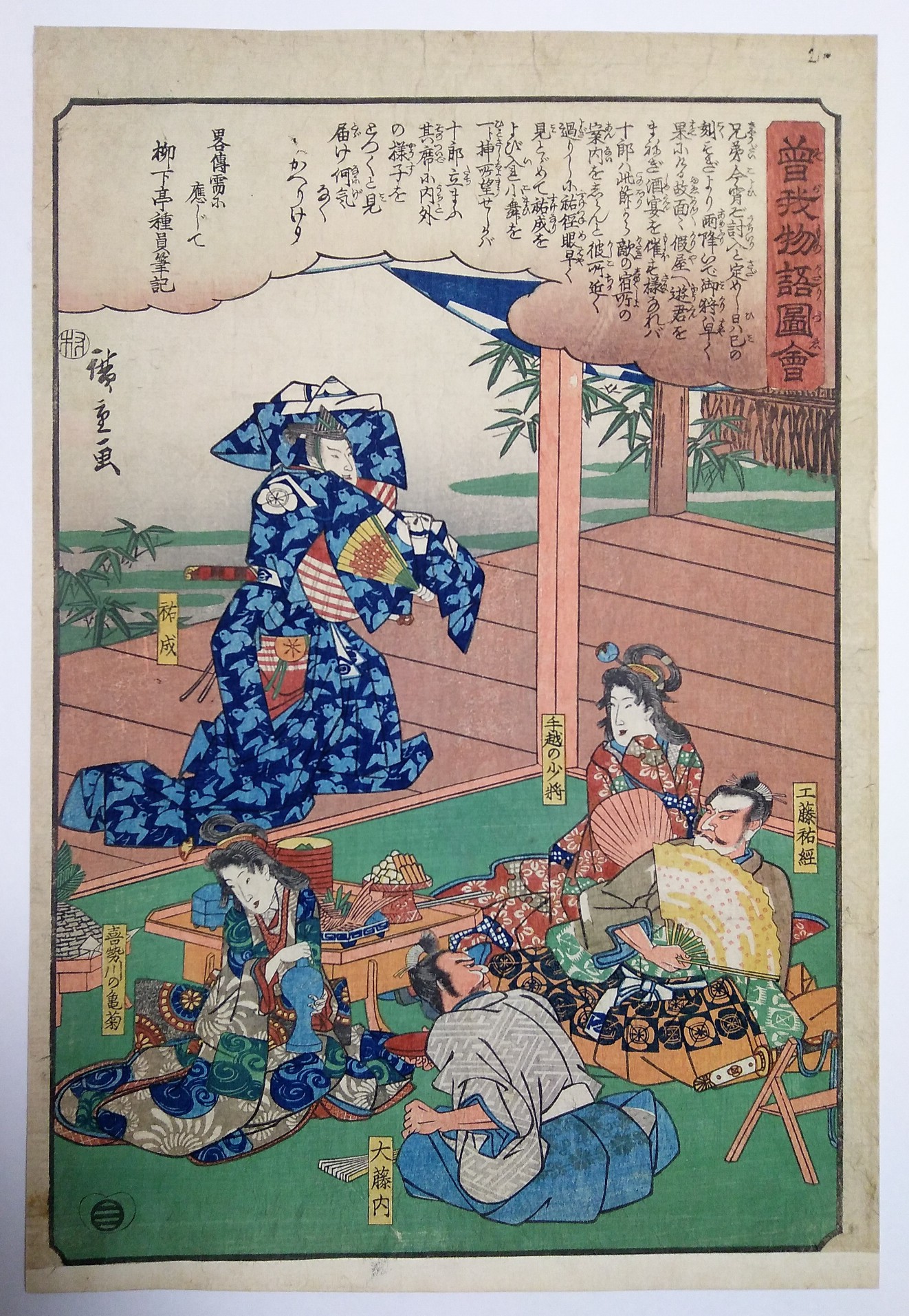
Sukenari dancing at the Fuji no makigari event
Collection of picture of
the Sōga Tale
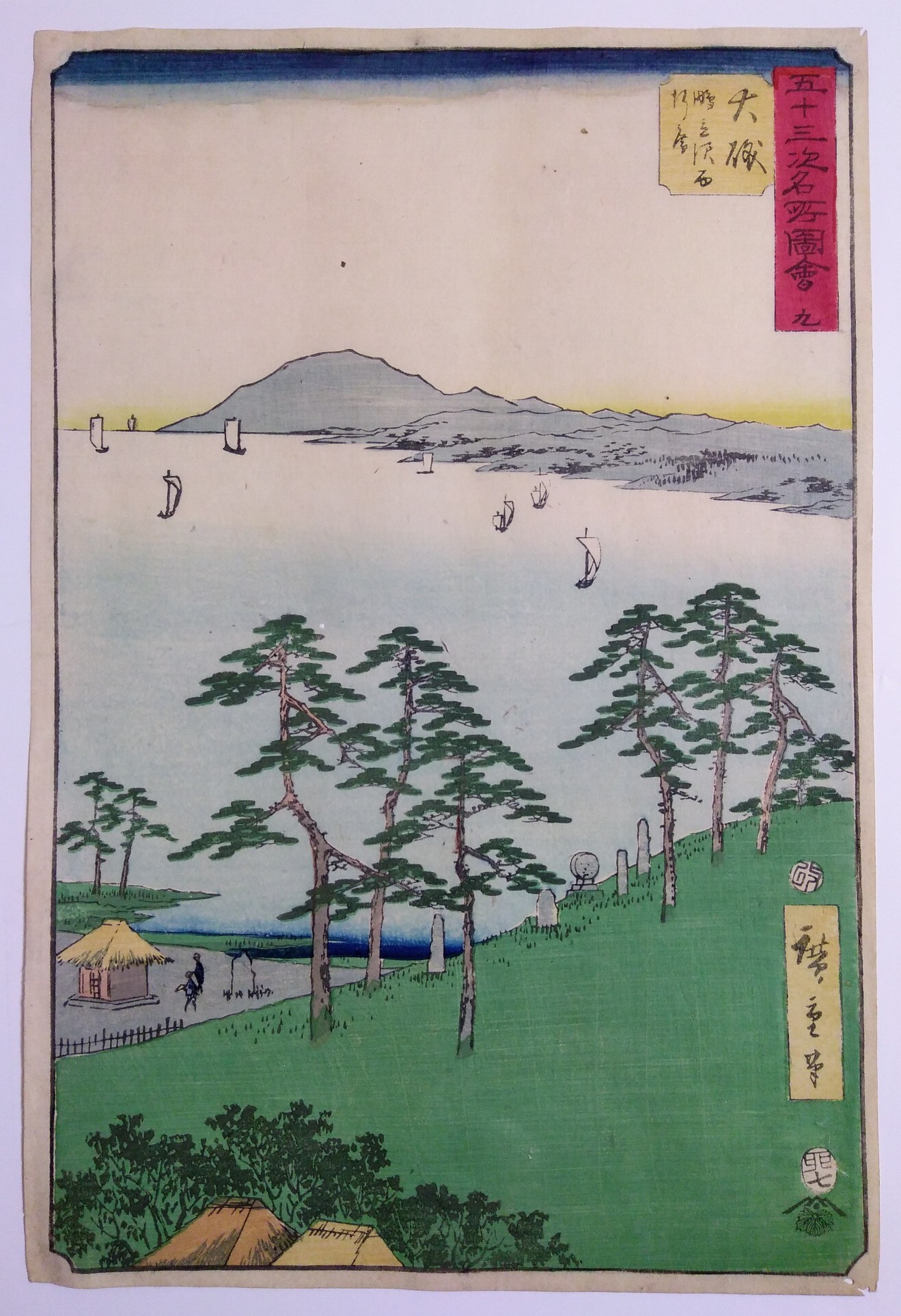
Ōiso: Saigyō's Hermitage at Snipe Marsh
Famous sight of the fifty three
stations

